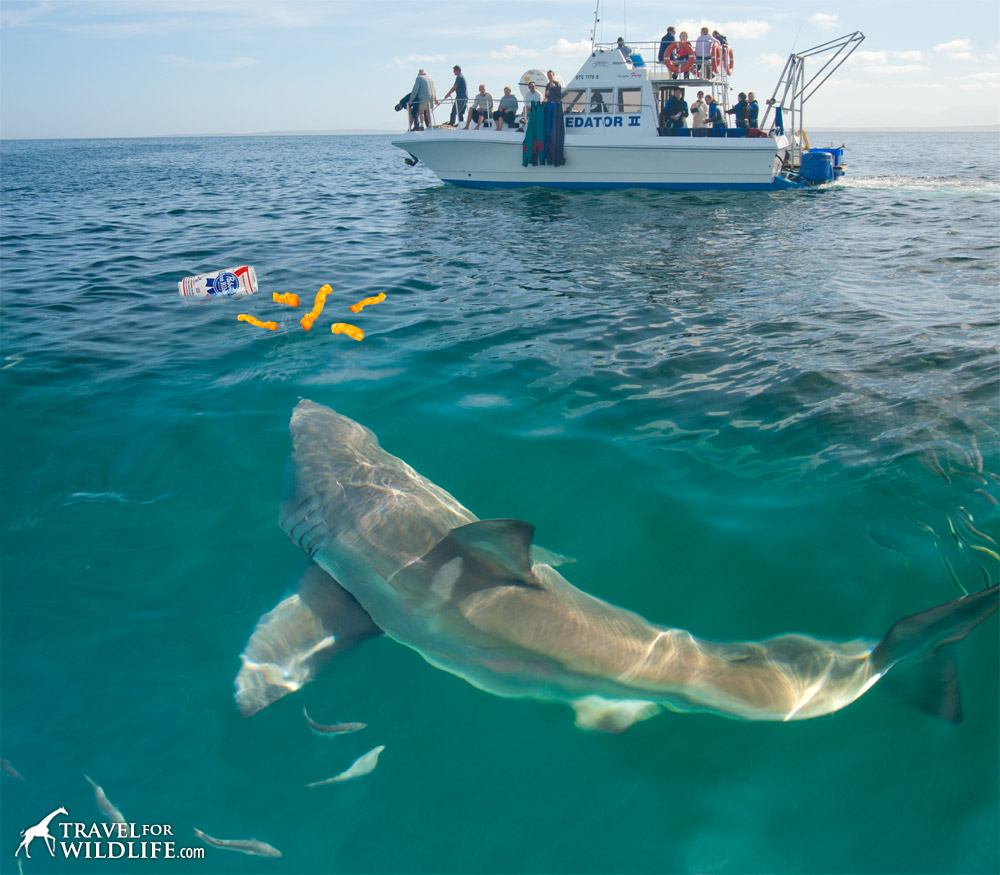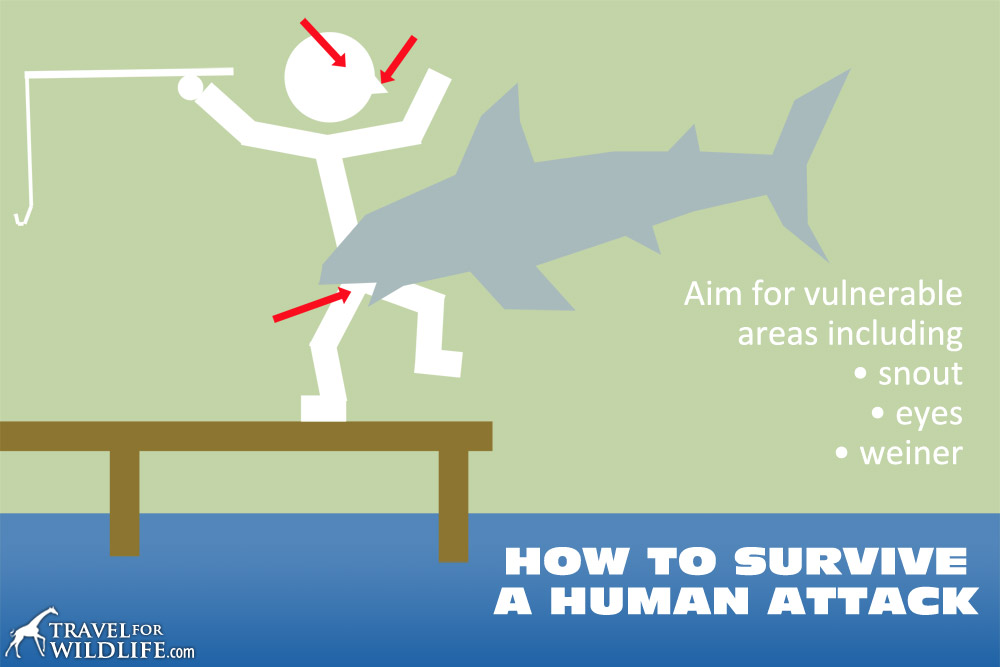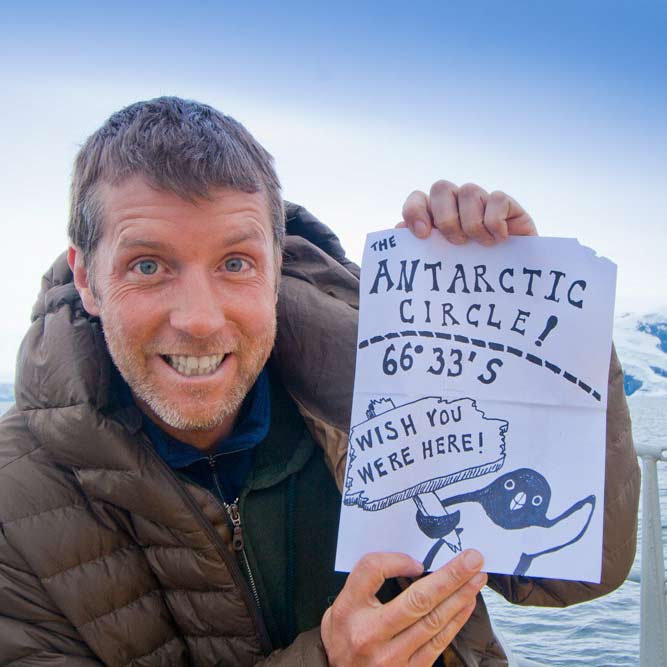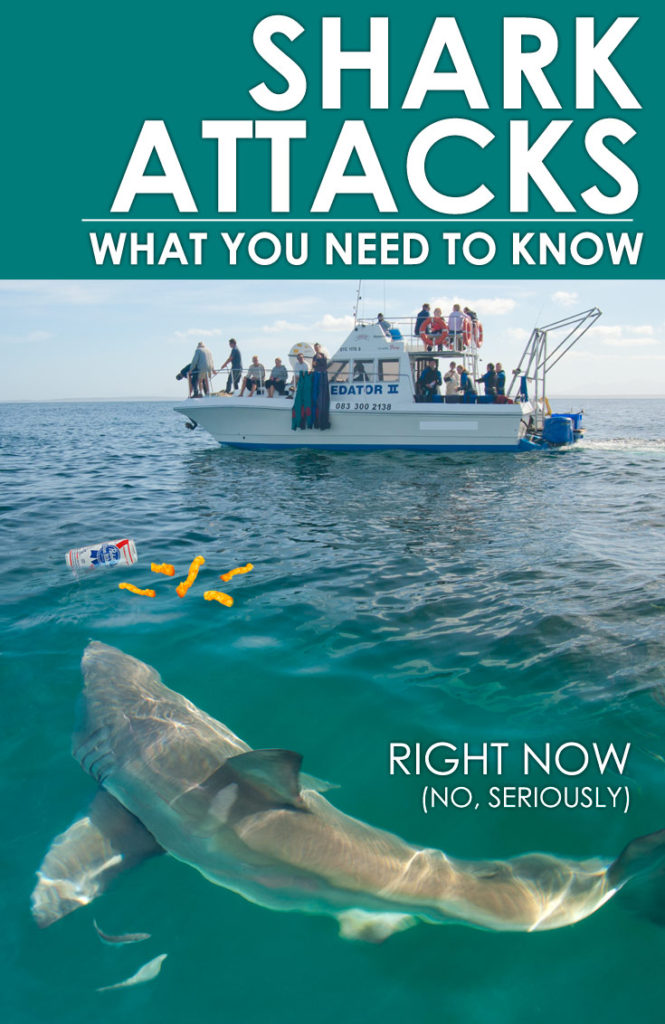The Truth Behind the Increase in Shark Attacks
In the wake of a recent string of attacks against innocent sharks along the coast of North Carolina, sharks worldwide have agreed to raise catch-and-release limits on humans.
One shark was quoted as saying, “I mean, it seems pretty fair right? Humans are killing millions of sharks each year, I think we should be able to raise our bag limits a bit.”
But the decision did not come lightly. Sharks have historically been very tolerant of the mammal menace. In 2014 there were only 72 humans caught by sharks (not counting human bycatch accidentally nipped in standard fishing activities) of which, all but 3 were released.
“Hey, you’re always gonna get some yahoo who breaks the law,” states a bull shark off the coast of New Jersey. “Last year there were reports of a couple of wise guys who kept the humans they caught. I don’t know why, I think they taste like crap.”
Many sharks point to successful conservation efforts that have allowed the land apes to rebound.
“Last year there were reports of a couple of wise guys who kept the humans they caught. I don’t know why, I think they taste like crap.”
Professor Claude L. Peduncle of the Mariana Institute of Deeper Understanding states, “When we were swimming the oceans 450 million years ago we weren’t seeing any of these things at all. Then the dinosaurs came and went and we started seeing a few fur-balls dipping their toes in. Primates started popping up and I’ll admit we ate our fair share. Especially when they started getting out on floating chunks of wood. But then they had that plague thing about 700 years ago and numbers started dropping.”
That’s when sharks instated a world-wide treaty prohibiting large scale commercial harvest of the monkey creatures. There’s no denying that populations have certainly rebounded since then thanks, at least in part, to these successful efforts. But most studies are blaming current problems on one primate species in particular. Scientists refer to it as the Great White Ape. Great Whites, often referred to as Swimming Monkeys, Bony-Snacks, or Humans, have been found responsible for nearly every attack on sharks made in the last several hundred years.
“My uncle had one of those really hairy red ones with the long arms throw a coconut at him off the coast of Borneo once,” claims one shark, but such reports involving attacks by other primate species are incredibly rare.
Primate expert Dr. Ampul A. Lorenzini explains that, although Great Whites exhibit a great deal of regional color variation ranging from dark brown to pinkish, “it’s really the white ones you have to watch out for. They’re extra nasty.” Of all the monkeys and apes, the Great White is the only one known to consistently attack and kill sharks.

In the wake of the exploding Great White Ape population, attacks on sharks have risen sharply. This month in North Carolina, more than a dozen sharks were attacked off a single pier.
Lorenzini claims that a “perfect storm” is brewing, which will lead to even more fatalities for sharks. “We have unusually warm waters this year, combined with the normal seasonal migration of Swimming Monkeys toward shorelines, throw in an economic upturn, and you’ve got yourself unprecedented numbers of these Great Whites showing up in our waters.”
Some sharks are pointing to “swim-with-humans” tourist attractions as being partly to blame. One tour operator off the coast of South Africa defends his slice of this lucrative business. “You go to these places where the humans are right there in their little cages, and they’re not biting you or trying to eat you or slice off your fin. It’s just a chance to see them as the awesomely awkward screaming monkey creatures that they really are.” Despite adamant denials, many operators actually use baits to lure in the humans. Some go as far as spreading Cheetos and unopened cans of beer on the surface of the water, to lure in the really big fat ones, in a process known as “chumping”.

One vocal opponent to human tours believes that “chumping is a really dangerous idea. I don’t care if there’s big money in it. It just doesn’t make sense. If you teach humans to associate sharks with food it’ll lead to more attacks, period. I’d rather put my sand dollars toward real human-conservation efforts.”
What can be done to stem the tide of human-attacks? Decision makers are conflicted. Amid a flurry of debate, sharks worldwide are panicking. Not since the horror film FINGERNAILS came out in the 1970’s has human-paranoia been so high. “just thinking about those blood-thirsty killing machines out there makes my claspers shrivel” says one whitetip from New Zealand. “Even though the human looked pretty fake in the movie, it still gave me the heebie jeebies.”

Rumors and speculation about human-attacks abound. “I was watching Human-Week on Discovery last month and this one attack survivor was talking about how a human just chopped off all his fins and threw him back in the water. It was disgusting. The poor guy will have stumps for the rest of his life, if he lives,” states a concerned teenager near Hong Kong. Some go so far as to claim humans actually eat the dismembered body parts.
Others have witnessed bizarre human adaptations for killing. “I saw this swimming monkey with a really long thing coming out of his arm, kinda like a jellyfish tentacle but way longer. Instead of stinging cells at the end there was this super sharp claw, like the talon on an osprey. It was carrying a little fish on the end.” The terrified shark went on to claim, “some unsuspecting guy swam by and saw it and was like oh yum. I tried to warn him but then BAM! The guy got hooked by the claw and the monkey drags him up into the air. It was the scariest thing I ever saw. My denticles still stand up just thinking about it.”
Such sentiments have lead extremists to suggest a cull. “Look, I don’t care about savin’ no damn Humans. I only care about the safety of my pups. Those mother %$#@ing things are eating all our fish anyway. We should just wipe out any Great White that comes near our shores. If we still had megalodon around he’d show those bitches what’s up.” Another hammerhead commented on Facebook: “This is just unacceptable. Yeah, we’ve been around a lot longer than they have so you have to kind of expect this sort of behavior from such primitive creatures, but seriously, evolve some empathy already.”
“If we still had megalodon around he’d show those bitches what’s up.”
Even middle-of-the road sharks are starting to lean toward action. One was quoted as saying, “Hey, I think we’ve been pretty good-natured about the whole thing. They killed a hundred million of us last year and we only killed, what, three of them? I mean c’mon. Something’s gotta change.”
Yet some environmentalists are still lobbying for human-rights. “I say this is another living thing with just as much right to be here as we have. Just because we’ve been running the planet for 400 million years doesn’t mean we were put on Earth to rule over all the other creatures. I don’t care what the Holy Bubble says.” Such comments are often met with cynicism. “Get off your high seahorse you damn kelp-hugger.” shouted one goblin shark at a recent demonstration.
Meanwhile, lawmakers have been struggling to come up with a solution to appease the masses. Earlier this year, authorities agreed to increase the number of catch-and-release licenses issued to recreational mammalers (sharks who catch mammals for sport). An officer with the Department of Land Mammaling states that in 2014, only 4 humans were caught off the coast of North Carolina with a total of about 50 along the entire North American coast. But this year, the number of licenses issued has tripled. Officer Snaggletooth stated, “We’ve already had around 8 humans caught and released off the coast of North Carolina in the past couple weeks.” Not a huge jump, but enough to have some animal-rights activists up in fins.
“This is just a euphemism for a culling operation,” states one angel shark in Florida. “We don’t know if humans even survive these activities.” In fact, very few studies have been conducted on the survival rates of humans returned to the land from recreational catch-and-release mammaling.
A mammaler on the NC coast argues, “I don’t see what the big deal is. I mean, sure, they have a hole in them when you throw them back but they heal up just fine right? Yeah, one of them loses an arm once in a while, but humans can’t even feel pain in the same way sharks do.” Most experts concur. Studies indicate that humans don’t even posses electroreceptors in their snout, and therefore must not sense much of the world around them. “They couldn’t even smell a drop of blood in a swimming pool for Christ’s sake. They basically have no idea what’s going on.”
“They couldn’t even smell a drop of blood in a swimming pool for Christ’s sake. They basically have no idea what’s going on.”
Despite these recent actions, human-attacks continue to rise and sharks around the world are wondering how to stay safe.
How To Survive a Human Attack.
• Experts suggest that you should fight back. Slap a human on the snout or poke it in the eyes. These are considered vulnerable areas. Biting off a limb or a testicle has also proven effective.
• If the human has hauled you out, make your way back to the water as soon as possible. Even if the human has left the area, you’re not truly safe until you’re back in the ocean.

Tips for Avoiding Human Attacks.
• Avoid food items that appear metallic, plasticky, or rubbery, especially ones containing hooks.
• Swim with other sharks and try not to splash around or expose your dorsal fin.
• Humans are attracted to shiny objects like gold, silver, and diamonds. Avoid swimming around large wooden chests containing such items.
• Do not eat fish near large net-like structures.
• Avoid swimming in human-infested waters during daylight hours.
• Refrain from wearing spotted clothing as this may cause humans to confuse you with one of their favorite prey items: cows.
But even after attacks, many brave sharks are still hitting the beaches this summer. One reef shark, even after sustaining a traumatic injury to his lip the previous year, was quoted as saying, “Man, it’s just what I love to do. Swimming around piers, snacking on some munchies, and catching a big wave by the shore. There’s just nothing like it. I don’t hold it against the humans. They’re just doin what they do.”
Enjoy this article? Pin this image!

Hal Brindley
Brindley is an American conservation biologist, wildlife photographer, filmmaker, writer, and illustrator living in Asheville, NC. He studied black-footed cats in Namibia for his master’s research, has traveled to all seven continents, and loves native plant gardening. See more of his work at Travel for Wildlife, Truly Wild, Our Wild Yard, & Naturalist Studio.


Kay
Sunday 27th of May 2018
Heheh just stumbled onto this and it's great!
Wandering Educators
Monday 6th of July 2015
Love this! Laughed so much I snorted my coffee on the keyboard. Sigh.
Hal Brindley
Tuesday 7th of July 2015
Ha ha. Awesome Jessie. Then my work is done. Another keyboard ruined. Thanks!
Sanja
Sunday 5th of July 2015
The BEST article in the history of the world. Can't tell you enough how much I loved this! Thank you for making my (initially slightly dodgy truth be told) Sunday fun!
Hal Brindley
Sunday 5th of July 2015
Hi Sanja! Thanks so much! I really appreciate that. Glad I could help take the bite out of your Sunday morning. Please share it with the readers of your excellent blog! -Hal